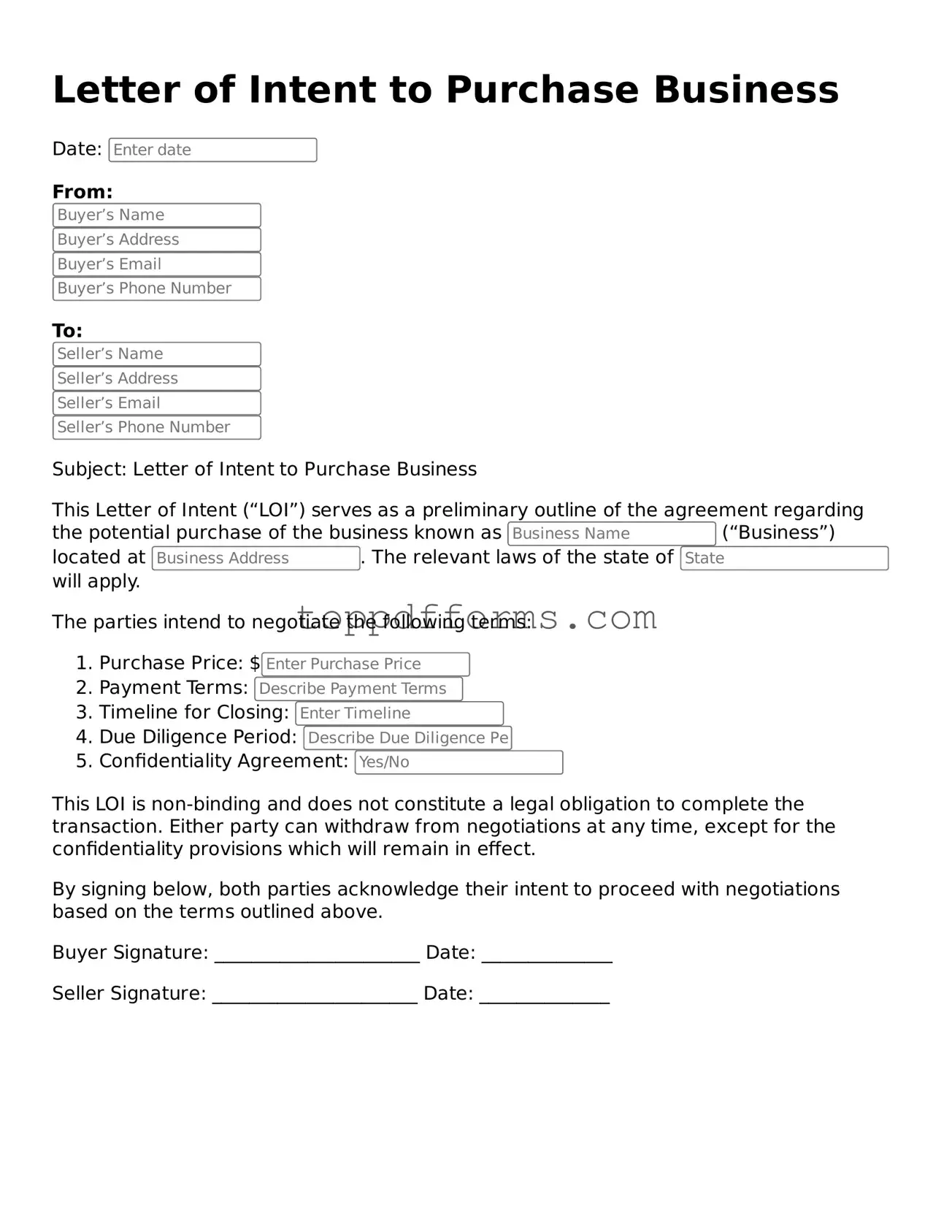When filling out a Letter of Intent to Purchase a Business, many individuals make common mistakes that can complicate the process. One frequent error is failing to clearly define the terms of the agreement. It’s essential to specify the purchase price and any contingencies. Without clarity, misunderstandings can arise later, leading to disputes.
Another mistake is neglecting to include a timeline for the transaction. Buyers and sellers should agree on key dates, such as when due diligence will begin and when the final purchase is expected to close. Omitting this information can result in delays and frustration for both parties.
Some people also forget to outline the assets being purchased. It’s crucial to detail whether the sale includes inventory, equipment, or intellectual property. By not specifying these items, confusion may occur, and it could lead to disagreements after the sale.
Additionally, many individuals overlook the importance of including a confidentiality clause. This clause protects sensitive information shared during negotiations. Without it, there is a risk that proprietary business details could be disclosed, which might harm the business’s reputation or competitive edge.
Another common oversight is not addressing the issue of liabilities. Buyers should be aware of any debts or obligations that the business may have. Failing to mention these can lead to unexpected financial burdens after the purchase is complete.
Some individuals also rush through the review process. Taking the time to read and understand each section of the Letter of Intent is vital. Mistakes made in haste can result in costly errors that affect the entire transaction.
Finally, it’s important to remember that signatures matter. Some people forget to sign the document or fail to have the appropriate parties sign it. A Letter of Intent without proper signatures may not hold up as a binding agreement, rendering all the efforts in filling it out ineffective.
